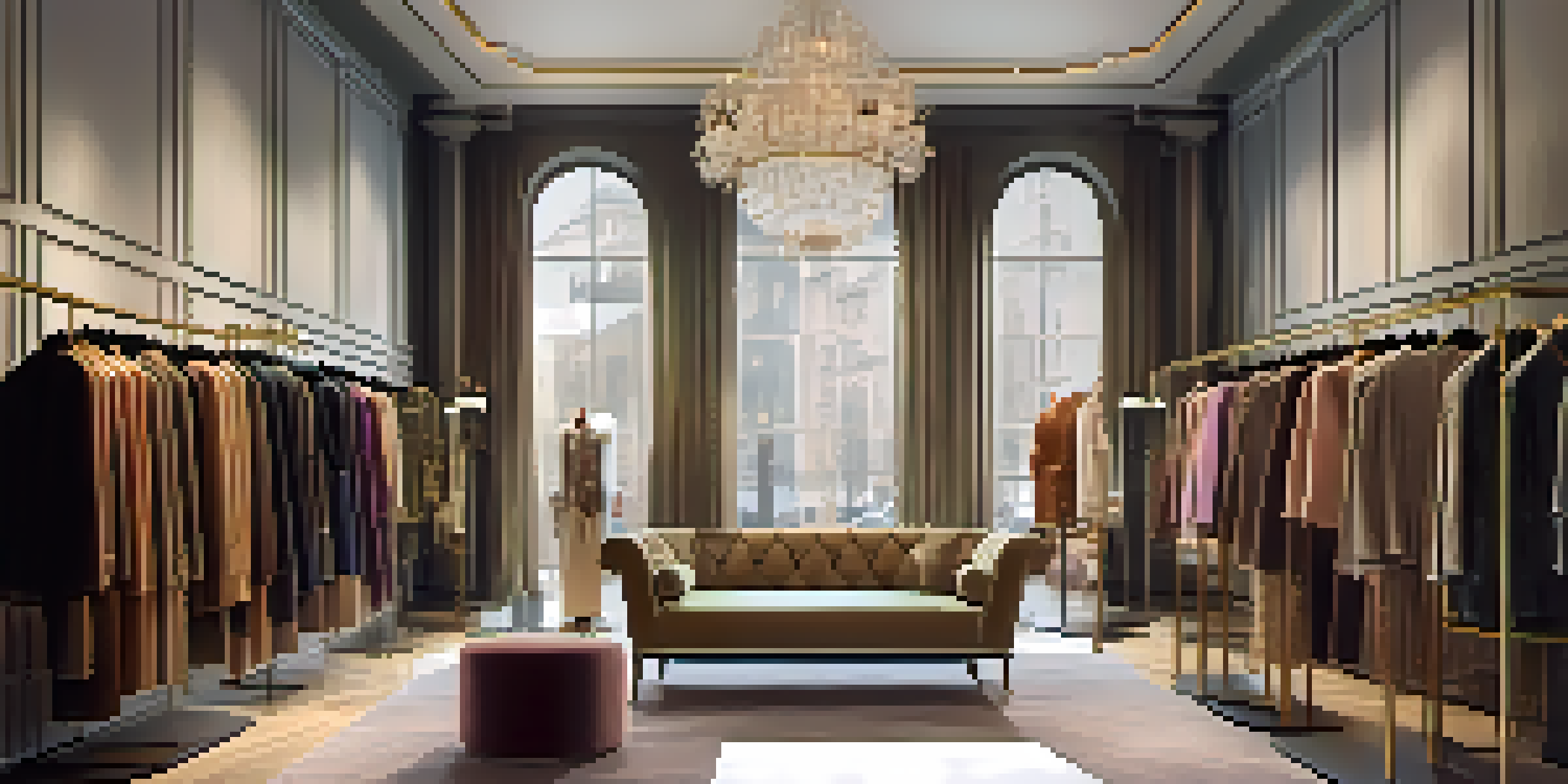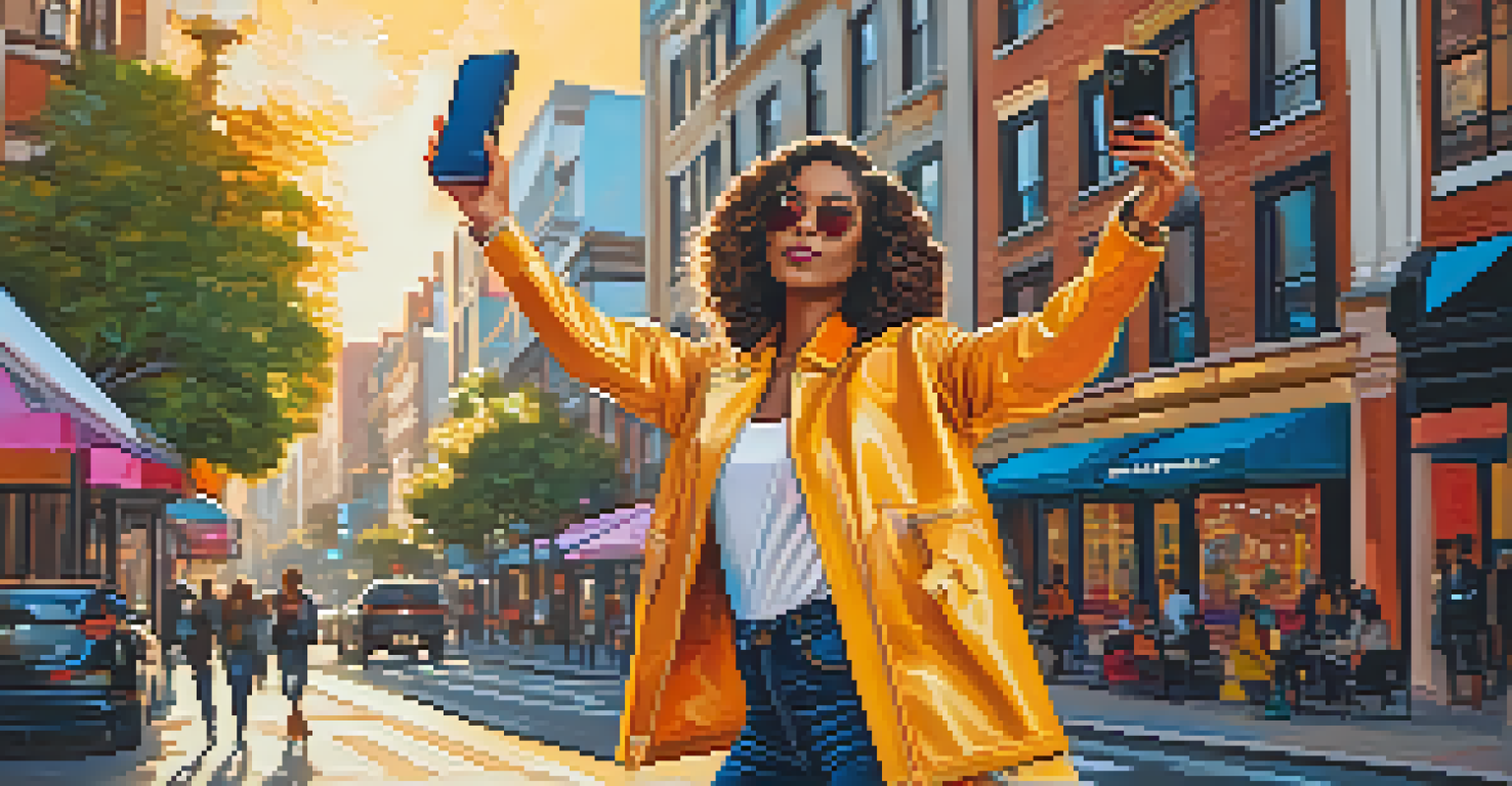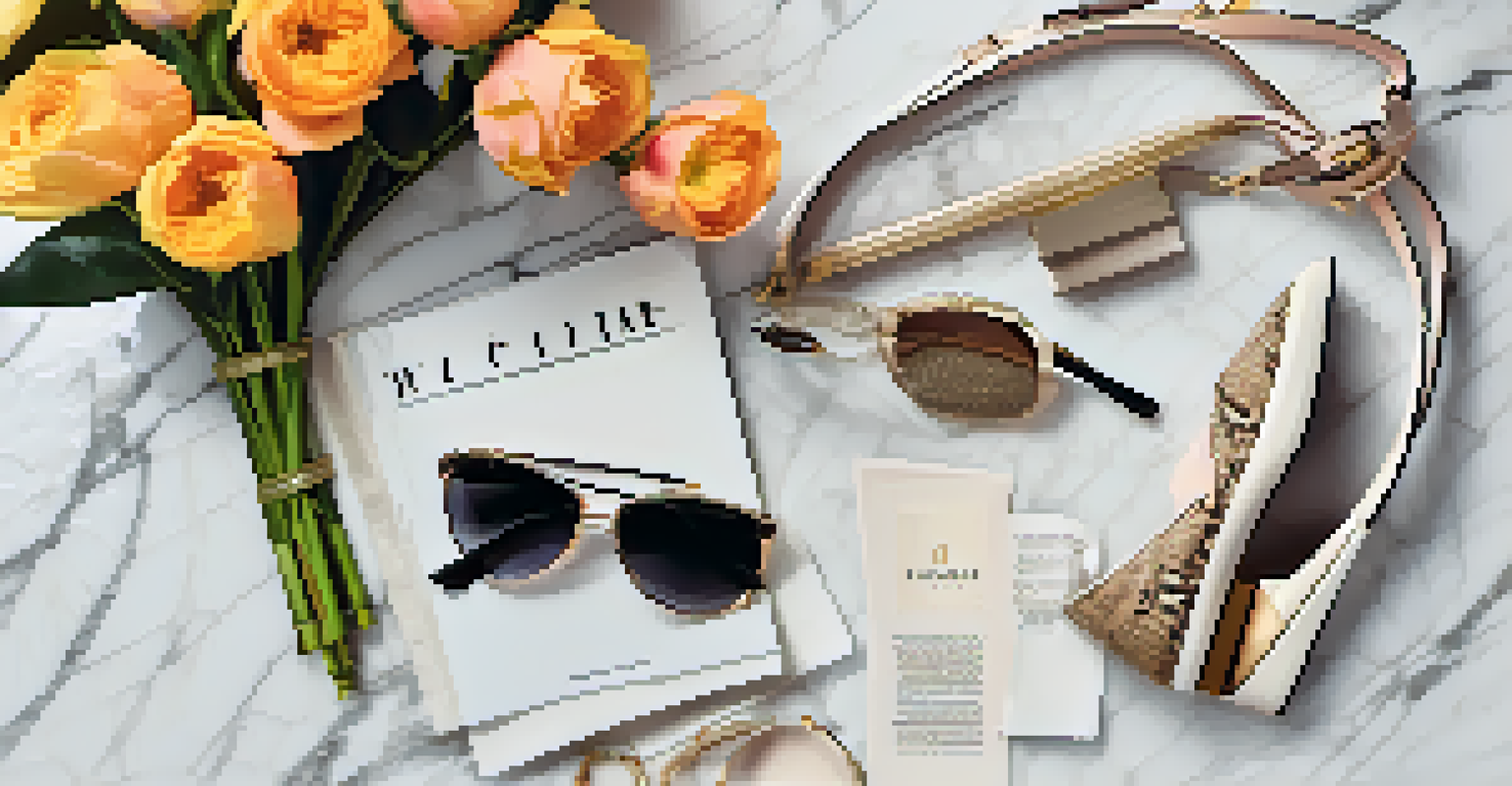The Influence of Social Media on Luxury Fashion Trends

How Social Media Redefines Luxury Fashion Brands
Social media has transformed the way luxury fashion brands engage with their audiences. Platforms like Instagram and TikTok allow brands to showcase their latest collections through visually stunning content. This direct interaction fosters a sense of community among luxury consumers, who now feel more connected to the brands they admire.
Social media has fundamentally changed the way fashion trends are created and consumed, enabling brands to engage with their audiences in real-time.
Moreover, the democratization of fashion through social media means that anyone with a smartphone can influence trends. Influencers and everyday users alike share their personal styles, creating a ripple effect that luxury brands must navigate. This shift challenges traditional marketing strategies and compels brands to adapt quickly to the ever-changing landscape.
As a result, luxury fashion brands are increasingly investing in their social media presence. They hire influencers, create engaging content, and even collaborate with digital creators to stay relevant. This new approach not only enhances brand visibility but also establishes a deeper emotional connection with consumers.
The Rise of Influencers in Luxury Fashion
Influencers have become the new gatekeepers of luxury fashion, driving trends with their vast reach and impact. With millions of followers, they can make or break a brand's reputation overnight. This shift has led luxury fashion houses to rethink their marketing strategies, often opting for influencer partnerships over traditional celebrity endorsements.

These influencers often showcase luxury items in relatable contexts, making high-end fashion feel more accessible. For instance, seeing a favorite influencer wearing a designer bag in a casual setting can inspire followers to consider making a purchase themselves. This relatability is a powerful tool that influences consumer behavior in the luxury market.
Social Media Transforms Luxury Brands
Luxury fashion brands now leverage social media to engage directly with consumers, creating a sense of community and connection.
Additionally, influencer marketing campaigns often create a sense of urgency through limited editions or exclusive launches. This strategy not only drives sales but also enhances the allure of luxury products. As influencers continue to shape consumer preferences, brands must strategically choose their partnerships to align with their values and target audience.
User-Generated Content: A New Trendsetter
User-generated content (UGC) has emerged as a significant trend in luxury fashion marketing. When consumers share their own photos and experiences with luxury products, it adds a layer of authenticity that brands struggle to create on their own. This grassroots approach can make luxury items feel more attainable and desirable.
The rise of influencers in the fashion industry signifies a shift towards more relatable and accessible luxury, making high-end fashion feel attainable for everyone.
Luxury brands are now encouraging customers to share their purchases on social media, often featuring UGC on their official accounts. This not only engages the community but also empowers consumers to feel like part of the brand's story. As more people participate, the sense of belonging to a luxury lifestyle grows stronger.
By leveraging UGC, luxury fashion brands can build a more relatable image while also enhancing their credibility. Consumers are increasingly looking for genuine recommendations, and seeing real people enjoy luxury products can be the nudge they need to make a purchase. This trend emphasizes the importance of community in shaping modern luxury fashion.
The Speed of Trends in the Digital Age
The fast-paced nature of social media has fundamentally changed how fashion trends emerge and evolve. Unlike traditional fashion cycles that relied on seasonal collections, social media allows trends to rise and fall in a matter of days or even hours. This rapid turnover can put immense pressure on luxury brands to keep pace.
For example, a viral hashtag can lead to an overnight sensation, prompting brands to respond swiftly with limited-edition releases or collaborations. This immediacy not only excites consumers but also challenges brands to innovate continuously. Staying ahead of the curve is crucial in a world where trends can become outdated almost instantaneously.
Influencers Shape Luxury Trends
Influencers have become critical in the luxury fashion space, often making high-end items feel more accessible and driving consumer behavior.
However, this speed also presents risks for luxury brands. Jumping on every trend can dilute brand identity and compromise the exclusivity that luxury represents. Therefore, brands must strike a balance between agility and authenticity, ensuring that their responses align with their core values while still engaging with current trends.
Social Media's Role in Sustainability and Luxury Fashion
Sustainability has become a key topic within the luxury fashion industry, and social media plays a pivotal role in shaping this conversation. Consumers are increasingly aware of the environmental impact of their purchases, and platforms like Instagram serve as a forum for discussing these issues. Brands that prioritize sustainability often find a receptive audience eager to support their initiatives.
Many luxury brands now use social media to showcase their sustainable practices, from sourcing materials to ethical labor conditions. By sharing compelling stories and visuals, they can effectively communicate their commitment to sustainability. This transparency not only builds trust with consumers but also enhances brand loyalty.
Moreover, social media enables consumers to hold brands accountable for their sustainability claims. If a luxury brand promotes itself as eco-friendly but fails to deliver, social media users are quick to call them out. This dynamic encourages brands to genuinely invest in sustainable practices, aligning their operations with the values of their target audience.
The Global Influence of Social Media on Fashion
Social media has shattered geographical barriers, allowing luxury fashion trends to spread globally at lightning speed. A fashion trend that starts in Paris can quickly influence consumers in Tokyo, New York, or even small towns around the world. This interconnectedness has created a truly global fashion landscape that luxury brands must navigate carefully.
As different cultures and regions engage with luxury fashion online, we see unique adaptations of trends. For example, a European brand might find that certain styles resonate better with Asian consumers, leading to localized marketing strategies. This cultural exchange enriches the fashion industry and allows brands to cater to diverse consumer preferences.
Sustainability in Luxury Fashion
Social media enhances transparency around sustainability efforts, allowing consumers to hold luxury brands accountable for their practices.
In this globalized environment, luxury brands must be attuned to regional trends and sensibilities. Understanding local markets is essential for successful campaigns, as consumers increasingly seek authenticity and relevance. By tapping into the global influence of social media, luxury brands can create tailored experiences that resonate with their audiences worldwide.
The Future of Luxury Fashion in the Age of Social Media
Looking ahead, the relationship between social media and luxury fashion is likely to evolve even further. As technology advances, we may see the rise of augmented reality (AR) and virtual reality (VR) experiences that enhance the way consumers interact with luxury brands. Imagine virtually trying on outfits or attending fashion shows from the comfort of your home.
Moreover, the increasing importance of data analytics will allow luxury brands to gain deeper insights into consumer behavior. By analyzing social media engagement, brands can tailor their offerings to meet the evolving desires of their audiences. This data-driven approach could redefine how luxury fashion is marketed and consumed in the future.

Ultimately, the luxury fashion landscape will continue to be shaped by the creativity and innovation that social media fosters. Brands that embrace change, stay authentic, and engage with their communities will thrive in this dynamic environment. As we move forward, the fusion of luxury fashion and social media promises to create exciting new opportunities for both brands and consumers.